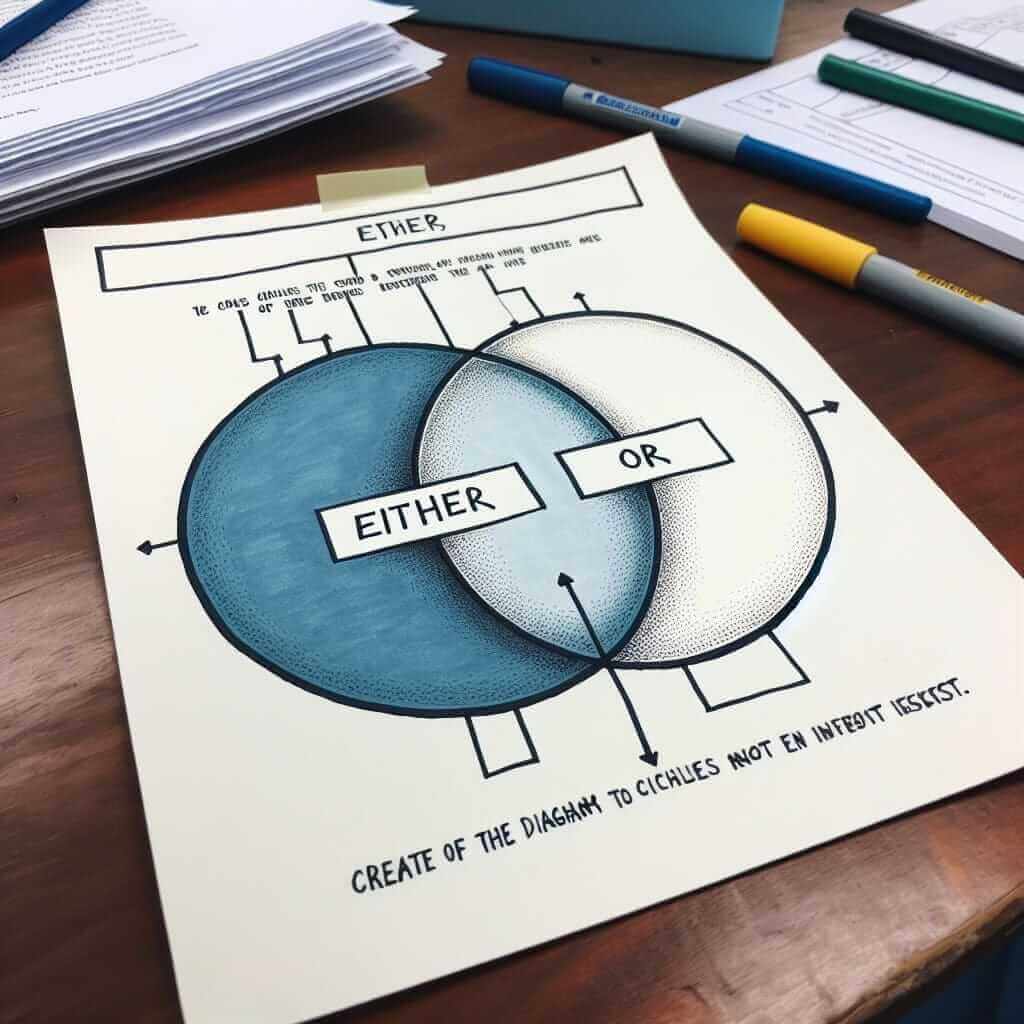The use of ‘either…or’ is a fundamental aspect of English grammar that often trips up IELTS test-takers. Understanding its nuances is crucial for achieving a higher band score, particularly in the Writing and Speaking sections where grammatical range and accuracy are assessed. This guide provides a deep dive into the intricacies of ‘either…or’, equipping you with the knowledge and practical examples needed to confidently incorporate this structure into your IELTS responses.
Table Of Contents
Understanding ‘Either…Or’ in the IELTS Context
‘Either…or’ presents two alternatives, indicating that only one of the options is possible or will be chosen. Mastery of this construction demonstrates a sophisticated understanding of conjunctions and enhances the clarity of your communication.
Let’s look at some examples illustrating how ‘either…or’ might appear across different IELTS sections:
-
Speaking (Part 1): “Do you prefer living in a house or an apartment?”
- Response: “Well, I’m not sure yet. Ideally, I’d like a place with a garden, so either a house or an apartment with a balcony would be great.”
-
Writing (Task 2): “Some people argue that the use of technology is detrimental to creativity. Others believe that it enhances creative potential. Discuss both views and give your own opinion.”
- Response: “Technology can either stifle or stimulate creativity, depending on how it is used.”
-
Listening (Multiple Choice): You hear a speaker say: “The conference will be held in either London or Manchester.” The question asks you to choose the correct location from a list.
The Mechanics of ‘Either…Or’
Structure and Usage:
Either…or…
- Connects two nouns: Either the book or the magazine.
- Connects two verbs: He will either call or email you.
- Connects two adjectives: The film was either exciting or terrifying.
- Connects two phrases: We can meet either at the park or at the café.
- Connects two clauses: Either you apologize for your behavior, or I’m leaving.
Important Considerations:
-
Subject-Verb Agreement: When ‘either…or’ joins subjects, the verb agrees with the subject closer to it.
- Correct: Either the students or the teacher is responsible.
- Correct: Either the teacher or the students are responsible.
-
Parallelism: The elements connected by ‘either…or’ should have parallel grammatical structure for clarity and stylistic elegance.
- Correct: I am either going to the library or studying at home.
- Incorrect: I am either going to the library or I will study at home. (Incorrect because one phrase is a simple present tense verb phrase and the other is a future tense sentence.)

Achieving a Higher Band Score with ‘Either…Or’
To impress the IELTS examiner and boost your score, consider these strategies:
-
Varied Sentence Structure: Don’t limit yourself to simple sentences. Use ‘either…or’ to create complex sentences for added impact.
- Example: While some individuals thrive in solitude, others find it isolating; either response to prolonged periods alone is entirely valid.
-
Formal Register: In Writing Task 2, maintain a formal tone when using ‘either…or’. Avoid contractions (e.g., “either…or not” instead of “either…or…”).
-
Natural Integration: Avoid forcing the structure into your writing. Use ‘either…or’ only when it feels natural and contributes to the clarity and flow of your ideas.
Common Pitfalls to Avoid
- Incorrect Subject-Verb Agreement: This is a frequent error. Be mindful of the noun closest to the verb.
- Lack of Parallelism: Ensure grammatical consistency on both sides of ‘either…or’.
- Overuse: Using ‘either…or’ excessively can make your writing sound repetitive. Vary your language.
Conclusion
Mastering ‘either…or’ is a small but significant step toward achieving a higher band score in the IELTS exam. By understanding its correct usage, practicing its application, and avoiding common pitfalls, you can confidently demonstrate your grammatical range and accuracy, enhancing your overall performance. Remember, practice makes perfect! Regularly incorporating this structure into your writing and speaking practice will solidify your understanding and lead to more natural and effective communication.